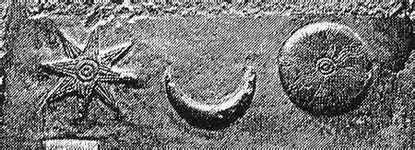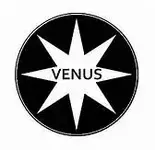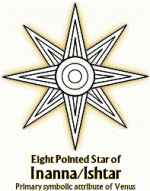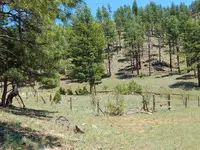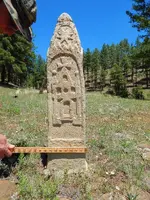1307 - 11 October Templar ships left La Rochelle, heading to Scotland with much of their wealth.
1307 - On Friday the 13th, in October , Jacques de Molay, the Grand Master of the Knights Templar, and 60 of his senior knights were arrested in Paris, France and charged with heresy. Many confessed under torture
Knights Templar Timeline
King Philip had other reasons to mistrust the Templars, as the organization had declared its desire to form its own state, similar to how the Teutonic Knights had founded Prussia. The Templars' preferred location for this was in the Languedoc of southeastern France,[citation needed] but they had also made a plan for the island of Cyprus. In 1306, the Templars had supported a coup on that island, which had forced King Henry II of Cyprus to abdicate his throne in favor of his brother, Amalric of Tyre. This probably made Philip particularly uneasy, since just a few years earlier he had inherited land in the region of Champagne, France, which was the Templars' headquarters. The Templars were already a "state within a state", were institutionally wealthy, paid no taxes, and had a large standing army which by papal decree could move freely through all European borders. However, this army no longer had a presence in the Holy Land, leaving it with no battlefield. These factors, plus the fact that Philip had inherited an impoverished kingdom from his father and was already deeply in debt to the Templars, were probably what led to his actions. However, recent studies emphasize the political and religious motivations of the French king. It seems that, with the "discovery" and repression of the "Templars' heresy," the Capetian monarchy claimed for itself the mystic foundations of the papal theocracy. The Temple case was the last step of a process of appropriating these foundations, which had begun with the Franco-papal rift at the time of Boniface VIII. Being the ultimate defender of the Catholic faith, the Capetian king was invested with a Christlike function that put him above the pope : what was at stake in the Templars' trial, then, was the establishment of a "royal theocracy".
At dawn on Friday, October 13, 1307, scores of French Templars were simultaneously arrested by agents of King Philip, later to be tortured in locations such as the tower at Chinon, into admitting heresy and other sacrilegious offenses in the Order. Then they were put to death. There were five initial charges lodged against the Templars. The first was the renouncement and spitting on the cross during initiation into the Order. The second was the stripping of the man to be initiated and the thrice kissing of that man by the preceptor on the navel, posteriors and the mouth. The third was telling the neophyte (novice) that unnatural lust was lawful and indulged in commonly. The fourth was that the cord worn by the neophyte day and night was consecrated by wrapping it around an idol in the form of a human head with a great beard, and that this idol was adored in all chapters. The fifth was that the priests of the order did not consecrate the host in celebrating Mass.
On August 12, 1308, the charges would be increased and would become more outrageous, one specifically stated that the Templars worshipped idols, specifically made of a cat and a head, the latter having three faces. The lists of articles 86 to 127 would add many other charges. The majority of these charges were identical to the charges that had been earlier issued against the inconvenient Pope Boniface VIII: accusations of denying Christ, spitting and urinating on the cross, and devil worship. Of the 138 Templars (many of them old men) questioned in Paris over the next few years, 105 of them "confessed" to denying Christ during the secret Templar initiations. 103 confessed to an "obscene kiss" being part of the ceremonies, and 123 said they spat on the cross. Throughout the trial there was never any physical evidence of wrongdoing, and no independent witnesses; the only "proof" was obtained through confessions induced by torture. The Templars reached out to the Pope for assistance, and Pope Clement did write letters to King Philip questioning the arrests, but took no further action.
Despite the fact that the confessions had been produced under duress, they caused a scandal in Paris, with mobs calling for action against the blaspheming Order. In response to this public pressure, along with more bullying from King Philip, Pope Clement issued the bull Pastoralis Praeeminentiae, which instructed all Christian monarchs in Europe to arrest all Templars and seize their assets. Most monarchs simply didn't believe the charges, though proceedings were started in England, Iberia, Germany, Italy, and Cyprus, with the likelihood of a confession being dependent on whether or not torture was used to extract it.
The dominant view is that Philip, who seized the treasury and broke up the monastic banking system, was jealous of the Templars' wealth and power, and frustrated by his enormous debt to them, sought to seize their financial resources for himself by bringing blatantly false charges against them at the Tours assembly in 1308. It is almost impossible to believe, that, under the influence of his carefully chosen advisors (the same that had persecuted Boniface), he actually believed the charges to be true. It is widely accepted that Philip had clearly made up the accusations, some nearly identical to those made against Boniface, and did not believe any of the Templars to have been party to such activities. It is a fact that he had invited Jacques de Molay to be a pall-bearer at the funeral of the King's sister on the very day before the arrests.
In 1312, after the Council of Vienne, and under extreme pressure from King Philip IV, Pope Clement V issued an edict officially dissolving the Order. Many kings and nobles who had been supporting the Knights up until that time, finally acquiesced and dissolved the orders in their fiefs in accordance with the Papal command. Most were not so brutal as the French. In England, many Knights were arrested and tried, but not found guilty.
Much of the Templar property outside France was transferred by the Pope to the Knights Hospitaller, and many surviving Templars were also accepted into the Hospitallers. In the Iberian Peninsula, where the king of Aragon was against giving the heritage of the Templars to the Hospitallers (as commanded by Clement V), the Order of Montesa took Templar assets.
The order continued to exist in Portugal, simply changing its name to the Order of Christ. This group was believed to have contributed to the first naval discoveries of the Portuguese. Prince Henry the Navigator led the Portuguese order for 20 years until the time of his death.
Even with the absorption of Templars into other Orders, there are still questions as to what became of all of the tens of thousands of Templars across Europe. There had been 15,000 "Templar Houses", and an entire fleet of ships. Even in France where hundreds of Templars had been rounded up and arrested, this was only a small percentage of the estimated 3,000 Templars in the entire country. Also, the extensive archive of the Templars, with detailed records of all of their business holdings and financial transactions, was never found. By papal bull it was to have been transferred to the Hospitallers.
A popular thread of conspiracy theory originating with Holy Blood, Holy Grail has it that the Templars used a fleet of 18 ships at La Rochelle to escape arrest in France. The fleet allegedly left laden with knights and treasures just before the issue of the warrant for the arrest of the Order in October 1307. This, in turn, was based on a single item of testimony from serving brother Jean de Châlon, who says he had "heard people talking that [Gerard de Villiers had] put to sea with 18 galleys, and the brother Hugues de Chalon fled with the whole treasury of the brother Hugues de Pairaud.
In Holy Blood, Holy Grail, the knights that allegedly boarded these ships then escaped to Scotland, but in some versions the Templars are even claimed to have left for North America, burying a treasure in Oak Island, Nova Scotia, Canada .
The Templars did have ships to carry personnel, pilgrims and supplies across the Mediterranean between the West and East and back. The records of the port of La Rochelle show that the Templars were exporting wine by ship.
Nicholson's argument against the posiblities , is an assessment of the fleet in 1312 - according to the LaRochelle Theory, many ships would already have disappeared bound for many of the aforementioned destinations and stands to reason their fleet would seem depleted in the following years after the arrest of the Templars.
https://en.wikipedia.org/wiki/History_of_the_Knights_Templar
As recorded in testimony of the Knight Jean de Châlon, the Templars had advance warning of the impending raid, and arranged a fleet of 18 galley ships to leave Port La Rochelle, visibly leaving behind a couple ships to avoid raising suspicions of their escape. This testimony during the trials specified that “Gerard de Villiers, the Paris Preceptor, had escaped with 50 horses and 18 ships.”
The historical record leaves “no doubt” that the Templar Grand Mastery “was aware that the arrests were impending”, planned for 13 October 1307 AD. It is documented that “the arrest orders were dated 14 September, so at the most the Templars had four weeks’ advance notice. … With a depleted stockpile of workable assets, coinage, gold, jewels and other saleable goods, the Templars fled the area of immediate persecution before the hammer could fall.”
It is known that “the very Rule of the Templar Order commanded the brothers to defend one another”, with a “duty to protect the order; at the cost of [one’s] own life if necessary.” For this reason, the Grand Master Jacques de Molay and a group of dedicated knights stayed behind, to avoid arousing suspicion, thus allowing the majority to escape to safety. “Only 620 Templar personnel are known to have been arrested in France” after the raids of 1307 AD. Historians “estimate that there were over 3,000 Templars” in France at that time, such that “over 2,000 fully armed and equipped Templar brothers, with their entire retinues of squires, servants, horses, baggage trains and camp followers” in fact did escape, and must have boarded the 18 ships that left the port of La Rochelle.
Scholars generally agree that “the Templars managed to disperse most of their portable wealth before the King’s henchmen came to confiscate it. Indeed, the royal agents found monasteries that had in large part been abandoned… they found the ships had set sail”. Other smaller “Templar fleets in the south and north of France, Flanders, and Portugal also left port — and sailed into legend. … Also missing from the Templars’ strongholds were the documents and records” of the former empire of the Order.
To provide for the infrastructure of the new form of the Order as an underground network, “with no more Holy wars to wage”, the Templars “fell back on their second career, finance and trade.” Naturally, “most of the Templar wealth was out in the field earning interest and revenue for the order… the money would be transferred to those branches still open and put to even greater use to recover the recent losses.” Also, besides the 18 ships that escaped from the port of La Rochelle in 1307 AD, “the vast majority of Templar ships, both merchant vessels and armed galleons… would surely have been doing what the Templars did best — plying the seas of the Mediterranean and Atlantic, earning money to keep the order financially sound.”
Survival « The Knights Templar ? Order of the Temple of Solomon



